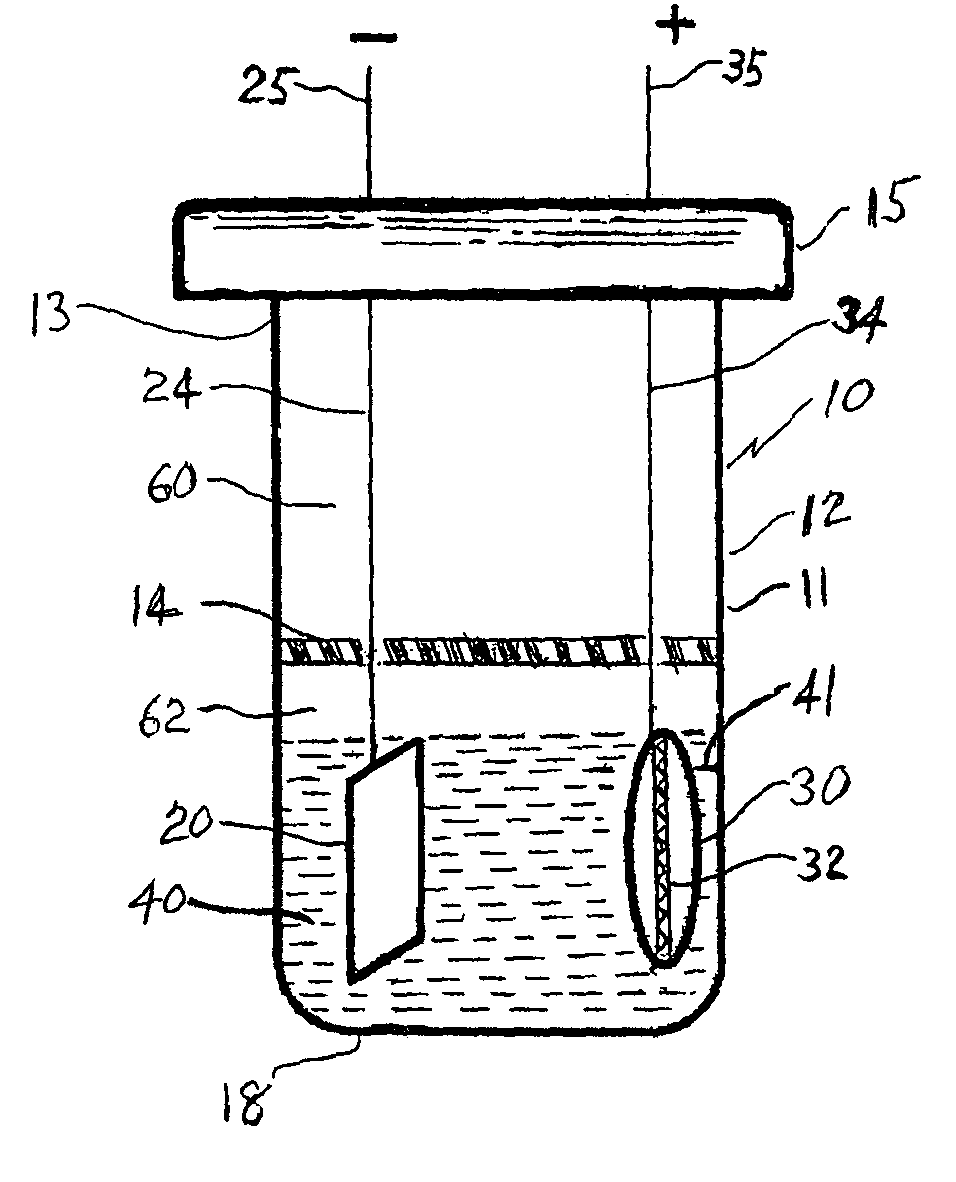Magnesium cell with improved electrolyte
a technology of magnesium anode and magnesium cell, which is applied in the direction of non-aqueous electrolyte cells, cell components, electrochemical generators, etc., can solve the problems of limiting the development and practical application of magnesium cells, affecting and affecting the effect of the beneficial effect of the additives of invention, so as to achieve significant capacity and power loss, enhance the beneficial effect of the additive of invention, and improve the discharge performance of magnesium cells
- Summary
- Abstract
- Description
- Claims
- Application Information
AI Technical Summary
Benefits of technology
Problems solved by technology
Method used
Image
Examples
Embodiment Construction
[0023]All of the cells constructed and tested can be characterized broadly as magnesium cells. The term magnesium cells as used herein shall be understood to mean electrochemical cells wherein the anode contains at a least a major amount of magnesium metal or magnesium metal alloy. The cells tested were all further characterized in that the electrolyte employed was a non-aqueous electrolyte. The term “non-aqueous” electrolyte as used herein is defined as electrolytes wherein the water content is less than 200 parts by weight water per million parts by weight of total electrolyte. More typically, the actual water content of the non-aqueous electrolytes herein described have a water content of less than about 100 parts by weight water per million parts by weight of total electrolyte.
[0024]A test cell 10 was constructed. The cell had a housing 12 having an elongated body 11 terminating at one end in a closed bottom 18 and at opposite end in open end 13. Housing 12 was of glass in order...
PUM
| Property | Measurement | Unit |
|---|---|---|
| particle size | aaaaa | aaaaa |
| particle size | aaaaa | aaaaa |
| particle size | aaaaa | aaaaa |
Abstract
Description
Claims
Application Information
 Login to View More
Login to View More - R&D
- Intellectual Property
- Life Sciences
- Materials
- Tech Scout
- Unparalleled Data Quality
- Higher Quality Content
- 60% Fewer Hallucinations
Browse by: Latest US Patents, China's latest patents, Technical Efficacy Thesaurus, Application Domain, Technology Topic, Popular Technical Reports.
© 2025 PatSnap. All rights reserved.Legal|Privacy policy|Modern Slavery Act Transparency Statement|Sitemap|About US| Contact US: help@patsnap.com


